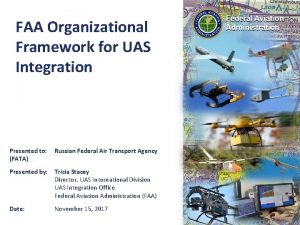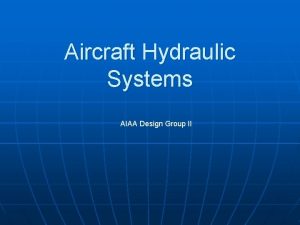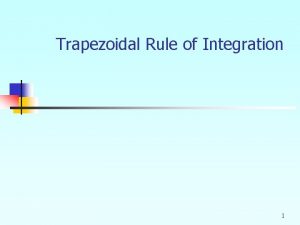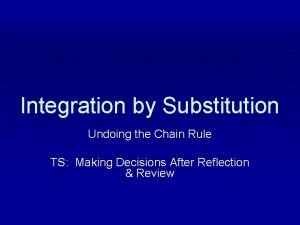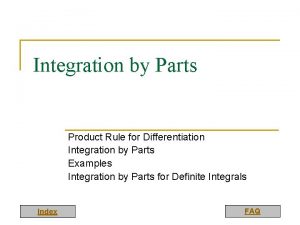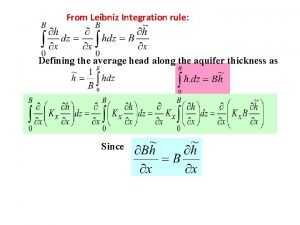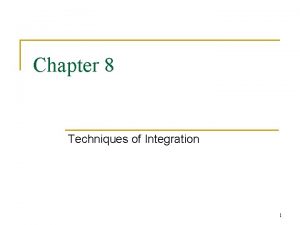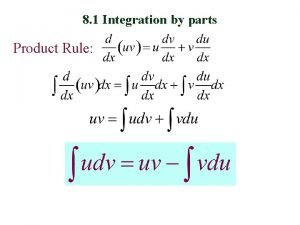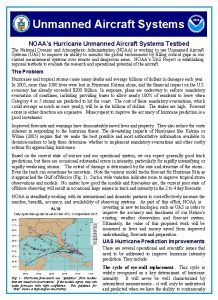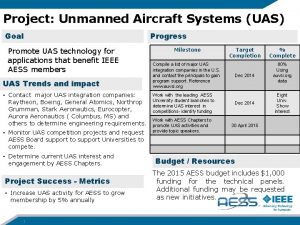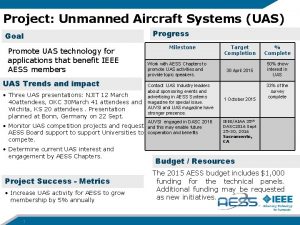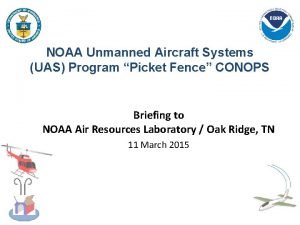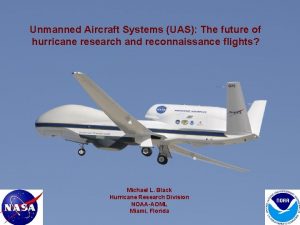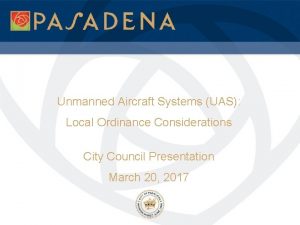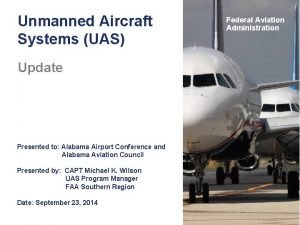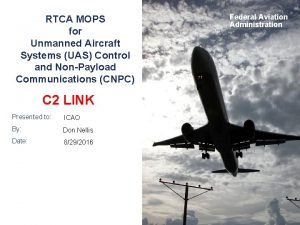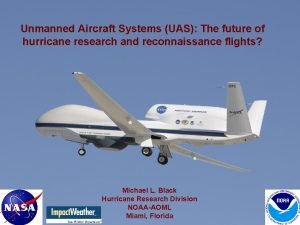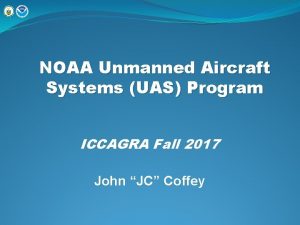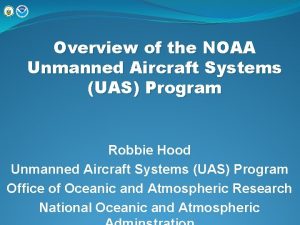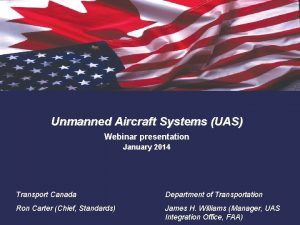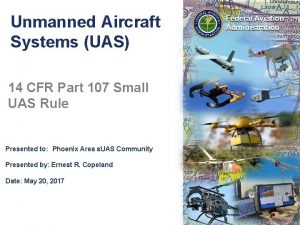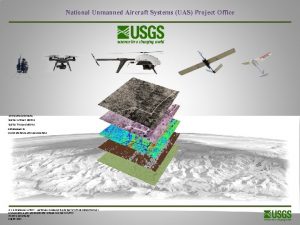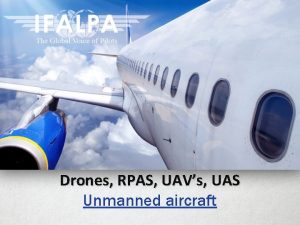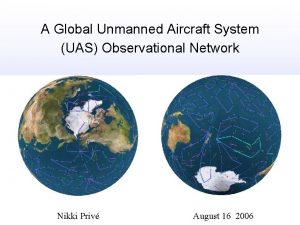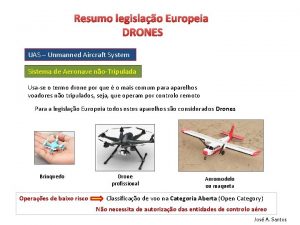Unmanned Aircraft Systems UAS Integration Small UAS Rule



















- Slides: 19

Unmanned Aircraft Systems (UAS) Integration Small UAS Rule Overview Presented to: MAPPS Summer Conference Presented by: Randy Willis, Manager, Emerging Technologies Federal Aviation Administration Date: July 16, 2016

Overview • UAS Registration • Small UAS Rule (Part 107) – Becoming a Pilot – Operating Rules • Next Steps in Integration – Focus Area Pathfinders & Extended Operations – Operations Over People Rulemaking • UAS Outreach, Education, & Enforcement • Collaborations MAPPS Summer Conference July 16, 2016 Federal Aviation Administration www. faa. gov/uas 2

UAS Executives Senior Advisor on UAS Integration Director of the UAS Integration Office • Reports directly to the Deputy • Administrator • Interacts with high-level executives both inside and • outside the FAA to ensure cross-LOB consistency MAPPS Summer Conference July 16, 2016 Reports to Associate Administrator for Aviation Safety (AVS) Leads the FAA’s efforts to safely and effectively integrate UAS into the nation’s airspace Federal Aviation Administration www. faa. gov/uas 3

Online UAS Registration • Applies to small UAS 0. 55 -55 lbs. flown outside • Owner must provide name, address, email – Non-recreational owners must provide make, model, and serial number (if available) of each s. UAS MAPPS Summer Conference July 16, 2016 Federal Aviation Administration www. faa. gov/uas 4

The Small UAS Rule (Part 107) • First operational rules for routine commercial use for small UAS (<55 pounds) • In effect August 29, 2016 • Recreational operators may fly under part 107 or Public Law 112 -95 Section 336 criteria MAPPS Summer Conference July 16, 2016 Federal Aviation Administration www. faa. gov/uas 5

The Basics • UAS operators must obtain a Remote Pilot Certificate • Visual line-of-sight, daylight operations • 400 feet or below in uncontrolled (Class G) airspace • UAS must weigh less than 55 lbs. and be registered MAPPS Summer Conference July 16, 2016 Federal Aviation Administration www. faa. gov/uas 6

Remote Pilot Certification • Must be at least 16 years old • Must read, write, and speak English • Must pass an aeronautical knowledge exam at an FAA-approved Knowledge Testing Center – Part 61 certificate holders can take online training at faasafety. gov instead of the knowledge exam • Must undergo TSA background security screening MAPPS Summer Conference July 16, 2016 Federal Aviation Administration www. faa. gov/uas 7

Part 107 Airspace Requirements • Operations in Class G are allowed without air traffic control authorization • Operations in Class B, C, and D airspaces, and Class E airspace designated for airports, require authorization from ATC MAPPS Summer Conference July 16, 2016 Federal Aviation Administration www. faa. gov/uas 8

Operating Rules • • Visual line-of-sight only Daylight or civil twilight only No operations over people Must yield right-of-way to manned aircraft • One UAS per operator • Max groundspeed of 100 mph • External load operation only permitted if the load does not affect flight operations or control MAPPS Summer Conference July 16, 2016 Federal Aviation Administration www. faa. gov/uas 9

Rules under Part 107 that can be Waived • • • Operation from a moving vehicle or aircraft (§ 107. 25) Daylight operation (§ 107. 29) Visual line of sight aircraft operation (§ 107. 31) Visual observer (§ 107. 33) Operation of multiple small unmanned aircraft systems (§ 107. 35) Yielding the right of way (§ 107. 37(a)) Operation over people (§ 107. 39) Operation in certain airspace (§ 107. 41) Operating limitations for small unmanned aircraft (§ 107. 51) MAPPS Summer Conference July 16, 2016 Federal Aviation Administration www. faa. gov/uas 10

Focus Area Pathfinders – Expanding Operations • 3 Focus Area Pathfinder Partners: 1. CNN • Exploring visual line-of-sight operations over people 2. Precision Hawk • Exploring extended visual line-of-sight operations in rural areas 3. BNSF Railways • Exploring beyond visual line-of-sight operations in rural areas MAPPS Summer Conference July 16, 2016 Federal Aviation Administration www. faa. gov/uas 11

Operations Over People Rulemaking • Stakeholder committee recommended regulatory framework for UAS operations over people to FAA on April 1, 2016 • Report outlines four categories of small UAS operations – Defined primarily by level of risk of injury posed • The FAA is considering these recommendations and developing a performance-based rule that would allow operations over people under part 107 MAPPS Summer Conference July 16, 2016 Federal Aviation Administration www. faa. gov/uas 12

UAS Detection Initiative • Growing concerns about potentially unsafe small UAS operations • The FAA co-leads an interagency group with DHS to research UAS detection technology • In October 2015, the FAA signed a CRDA with CACI International to test its detection technology • In May 2016, the FAA signed additional CRDAs with Gryphon Sensors, Lit. Eye, and Sensofusion MAPPS Summer Conference July 16, 2016 Federal Aviation Administration www. faa. gov/uas 13

UAS Outreach and Education MAPPS Summer Conference July 16, 2016 Federal Aviation Administration www. faa. gov/uas 14

Law Enforcement’s Role • State and local Law Enforcement Agencies (LEAs) are often in the best position to deter, stop, and investigate unsafe or unauthorized UAS operations. • Law Enforcement Guidance is available at: www. faa. gov/uas/law_enforcement MAPPS Summer Conference July 16, 2016 Federal Aviation Administration www. faa. gov/uas 15

Collaboration Efforts Government/ Academia Industry International UAS Executive Committee (Ex. Com) Drone Advisory Committee International Civil Aviation Organization (ICAO) RPAS Panel UAS Detection Initiative UAS Center of Excellence (ASSURE) UAS Test Sites MAPPS Summer Conference July 16, 2016 RTCA Special Committee 228 ASTM International Committee Focus Area Pathfinders UAS Symposium Joint Authority for Rulemaking on Unmanned Systems (JARUS) Civil Air Navigation Services Organization (CANSO) Federal Aviation Administration www. faa. gov/uas 16

Thank you! MAPPS Summer Conference July 16, 2016 Federal Aviation Administration www. faa. gov/uas 17

Types of UAS Operations Flying for Fun Flying for Business or Work Pilot Requirements • No pilot requirements • Must have Remote Pilot Airman Certification • Must be 16 years or older • Must pass TSA vetting Aircraft Requirements • Must be registered if over 0. 55 pounds • Must be less than 55 pounds • Must be registered if over 0. 55 pounds • Must undergo pre-flight checklist Location Requirements • Must notify all airports and air traffic control (if applicable) within five miles of proposed area of operations • Class G airspace without ATC permission • Class B, C, D, and E require ATC permission Operating Rules • Must ALWAYS yield right of way to manned aircraft • Must keep aircraft in visual line-ofsight • Must follow community-based safety guidelines • • Definitions • Education or recreational flying only • • • Must keep aircraft in visual line-of-sight* Must fly under 400 feet* Must fly only during daylight hours* Must fly at or below 100 mph* Must yield right of way to manned aircraft* Must NOT fly over people* Must NOT fly from a moving vehicle* Must operate one UAS per operator Flying for commercial use Flying incidental to a business Flying under a government entity *These requirements are subject to waiver. MAPPS Summer Conference July 16, 2016 Federal Aviation Administration www. faa. gov/uas 18

Aeronautical Knowledge Exam Topics • Applicable regulations relating to small unmanned aircraft system rating privileges, limitations, and flight operation • Airspace classification and operating requirements, and flight restrictions affecting small unmanned aircraft operation • Aviation weather sources and effects of weather on small unmanned aircraft performance • Small unmanned aircraft loading and performance • Emergency procedures • Crew resource management • Radio communication procedures • Determining the performance of small unmanned aircraft • Physiological effects of drugs and alcohol • Aeronautical decision-making and judgment • Airport operations • Maintenance and preflight inspection procedures MAPPS Summer Conference July 16, 2016 Federal Aviation Administration www. faa. gov/uas 19
 Unmanned space probes
Unmanned space probes Who is the chief guest at macbeth's celebration feast
Who is the chief guest at macbeth's celebration feast Faa afs org chart
Faa afs org chart Aircraft hydraulic systems
Aircraft hydraulic systems Three dimensions of corporate strategy
Three dimensions of corporate strategy Forward backward integration
Forward backward integration What is simultaneous integration
What is simultaneous integration Msi medium scale integration
Msi medium scale integration Ultra large scale integration
Ultra large scale integration Trapezoidal formula
Trapezoidal formula Bernoulli's rule in integration
Bernoulli's rule in integration Product rule integrals
Product rule integrals Properties of integration
Properties of integration Chain substitution method
Chain substitution method Differentiation by parts formula
Differentiation by parts formula Leibniz rule
Leibniz rule Product rule of integration
Product rule of integration Simpson 3/8 rule formula
Simpson 3/8 rule formula Integral product rule
Integral product rule Bernoulli equation pipe flow
Bernoulli equation pipe flow


